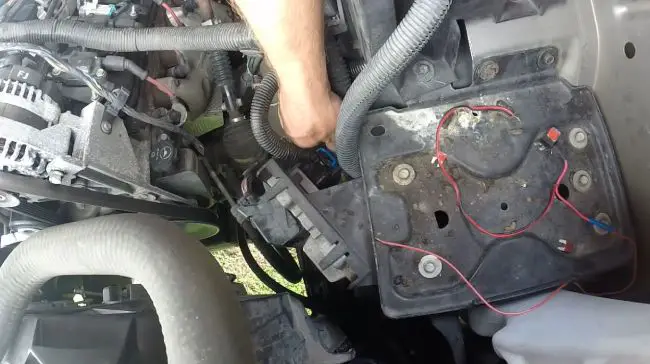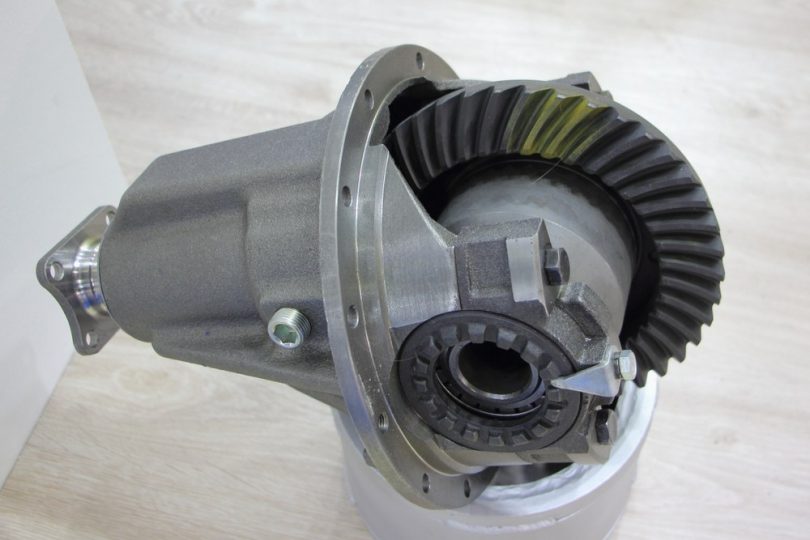When your transmission control module is not working correctly, it affects the ability to shift, decreases your gas mileage, and can cause the transmission to overheat. Before taking it to the shop, try a reset first.
Here we’ll learn the signs of a bad transmission control module, step-by-step instructions to do the reset, and learn some tips that will make it easier.
Symptoms of a Bad Transmission Control Module

**Photo Courtesy: YouTube
-
Can’t Get Out of Gear
The car is not shifting as easily as it used to; it may feel stuck. As the gear gets stuck at one speed, your transmission will not slip into gear.
-
Issues in Shifting
The car spontaneously shifts into gear or pops into neutral. You will feel the gears slip as you slow down or speed up.
This is caused by a transfer delay of information to the transmission, resulting in the gears slipping.
-
Poor Gas Economy
You start getting poor gas mileage. The car is not running as precisely as it should and burns more gas than needed, resulting in fewer miles to gallons of gas.
-
Check Engine Light is On
Before you drive very far, your transmission may start to overheat or the check engine light will come on. This tells you that the car detects a conflict.
In this case, it is the transmission control module.
-
Downshifting Issues
You have trouble downshifting when you slow down and the car makes noises. It is the flip side of not shifting into high gear.
Your car won’t shift out of low gear, so you can increase your speed, like when you want to pass a car while driving.
-
Can’t Shift to Higher Gear
You can’t get to maximum speed when shifting into the higher gear. You can feel the engine revving because the gearbox is trying to keep up with the gear you are trying to shift into.
Tools to Reset Transmission Control Module
Your car key is the only tool you need to reset the transmission control module.
Identifying the Transmission Control Module
Your engine connects to the transmission via the transmission control module. The transmission control module (TCM) is controlled by the car’s computer and is part of the electronic system. It relays to the gears when to shift based on your speed and when you are shifting.
Problems with the transmission will make controlling the car much harder. It sits in the rear of the engine space behind the firewall.
A problem within the transmission code module will signal the computer an error that triggers the check engine light and offers a code read by a scanning tool for diagnosis.
Reasons Why a Transmission Control Module Goes Bad
-
Thermal Stress/Vibrations
High engine temperatures and vibrations of the car can affect the transmission control module.
-
Short Circuit in a Circuit
A cracked or loose wire to or from the transmission control module may be causing a short.
-
Short Circuit from Water in the Circuitry
Water droplets or moisture on the circuitry will block the current and cause the circuitry to short out.
-
Overloaded Voltage
An overload of voltage can fry your car’s electronic system, including the transmission control mode.
-
Solenoid Circuits and Actuator Short Circuit
The short circuits in the solenoid and actuator are caused by wires rubbing together, broken and loose wiring, water, and the impact of crashes. One or all of these can cause an interruption in your car’s transmission control module.
How to Reset Transmission Control Module Chevy
Step 1: Using your Key to Reset
Turn it once with your key in the ignition. Your dashboard lights should come on; at the same time, you will hear two clicks.
Step 2: Depressing the Gas Pedal
Your car should be on, but the engine should still be off, press the gas pedal to the floor. You will need to keep the gas pedal down until turning the car off.
Step 3: Keep the Gas Pedal Down and Wait
Keep the gas pedal to the floor for approximately 10 seconds.
Step 4: Turn Off the Car
Leave the key in the ignition, and turn the key to the off position.
Step 5: Foot Off the Gas Pedal
Take your foot off the gas pedal.
Step 6: More Waiting
It will take about 2 ½ minutes for the transmission to reset, sit back and wait.
Step 7: Calibrating After the Test Drive
Take the car for a 10-to 20-minute ride, listen for noises and the gears as they shift. Is it shifting as it should be?
If the vehicle is running as it should be, your work is done. If not, you will have to do the reset again or see a mechanic.
Can You Reset TCM by Disconnecting the Battery?
No! Resetting the transmission control module will not fix the gear shifting problems or complete the phase needed to do the reset.
You need a scan tool to reset the car to the default settings.
Can the Transmission Control Module Give Off a Bad Code?
If you use a scanning tool to troubleshoot, it will undoubtedly offer transmission code module codes P0613, P0706, or P0700.
These codes indicate issues associated with the transmission code module.
Tips for Resetting the Transmission Control Module
- Keep the gas pedal pushed down to the floor through the whole reset
- Give the car 5 minutes to reset after releasing the gas pedal
- Drive the car at your usual speed so the TCM can reset to the way you drive










Leave a Comment